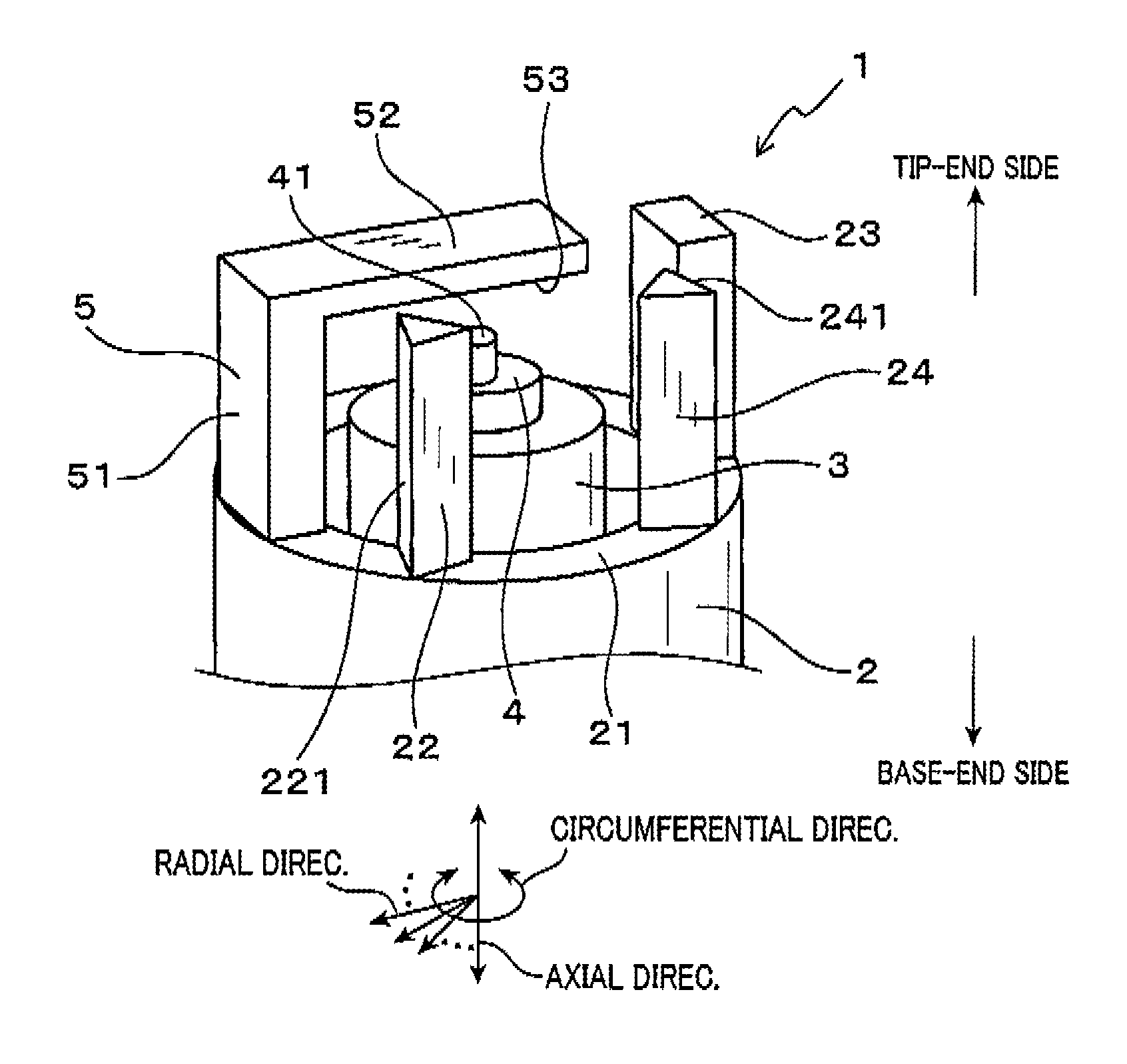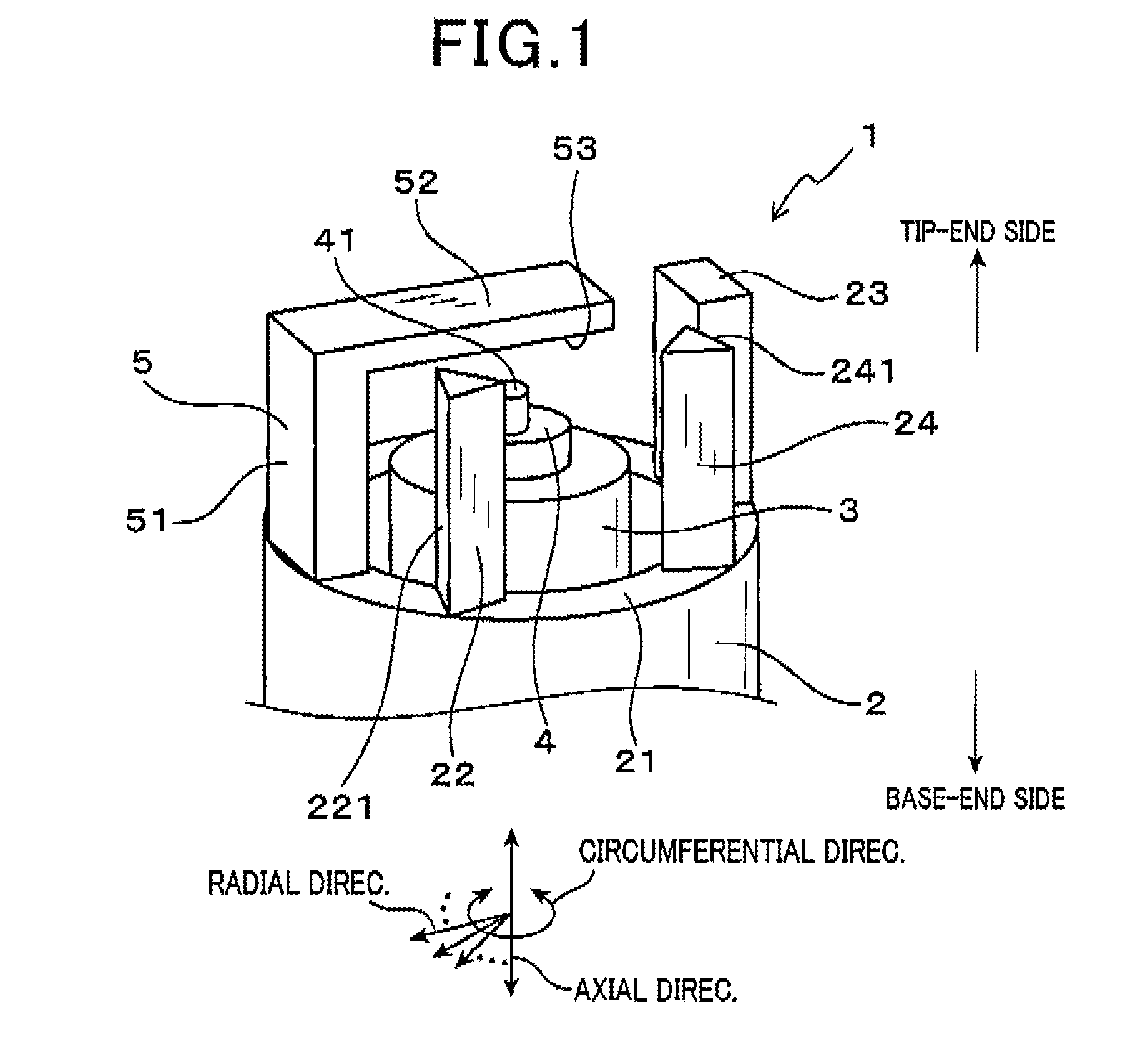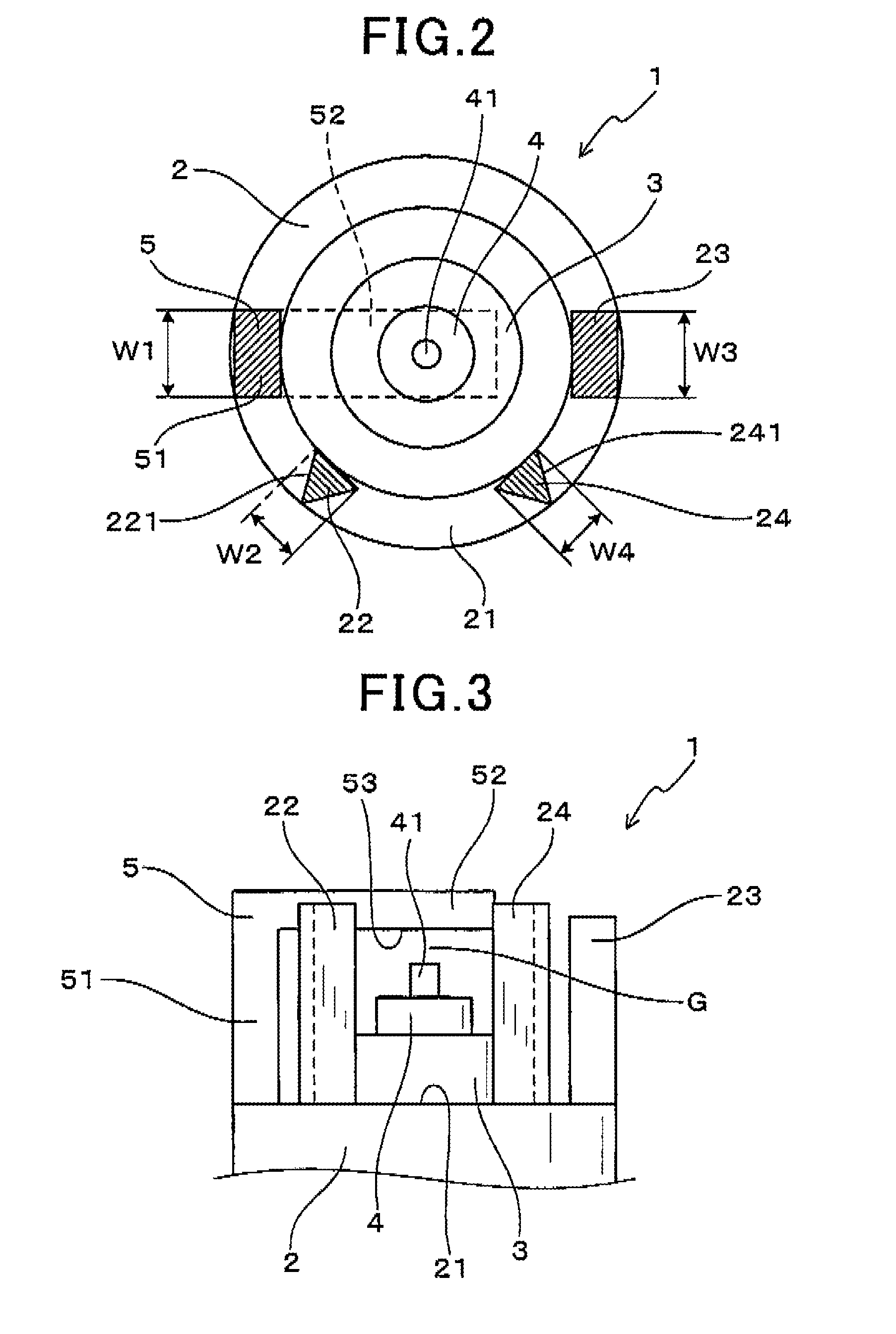Spark plug for internal combustion engines
a technology for spark plugs and internal combustion engines, which is applied in the direction of spark plugs, basic electric elements, electric devices, etc., can solve the problems of affecting the stability of combustion, and affecting the ignitability of spark plugs, so as to prevent the stagnation of airflow f, stable ignitability, and the effect of reducing the stagnation ra
- Summary
- Abstract
- Description
- Claims
- Application Information
AI Technical Summary
Benefits of technology
Problems solved by technology
Method used
Image
Examples
experimental example 1
[0123]As shown in FIG. 13, in Experimental Example 1, the spark plugs 1, 9 and 90 of the first embodiment, Comparative Example 1 and Comparative Example 2, respectively, were used to investigate how the A / F limit varied depending on the location of the vertical portions 51 and 951 of the ground electrodes 5 and 95, respectively, with respect to the airflow F.
[0124]Specifically, the A / F limit was measured by changing a mounting angle β in increments of 90° in a range of 0° to 360°. The mounting angle β is an angle between the direction of entry of the airflow F into the spark plug 1 and the radial direction connecting between the circumferential position of the vertical portion 51 of the ground electrode 5 and the center axis of the spark plug 1, when the spark plug 1 of the first embodiment is viewed in the axial direction from the tip-end side. More specifically, when the mounting angle β is 0°, the vertical portion 51 of the ground electrode 5 is located upstream of the spark disc...
PUM
 Login to View More
Login to View More Abstract
Description
Claims
Application Information
 Login to View More
Login to View More - R&D
- Intellectual Property
- Life Sciences
- Materials
- Tech Scout
- Unparalleled Data Quality
- Higher Quality Content
- 60% Fewer Hallucinations
Browse by: Latest US Patents, China's latest patents, Technical Efficacy Thesaurus, Application Domain, Technology Topic, Popular Technical Reports.
© 2025 PatSnap. All rights reserved.Legal|Privacy policy|Modern Slavery Act Transparency Statement|Sitemap|About US| Contact US: help@patsnap.com



